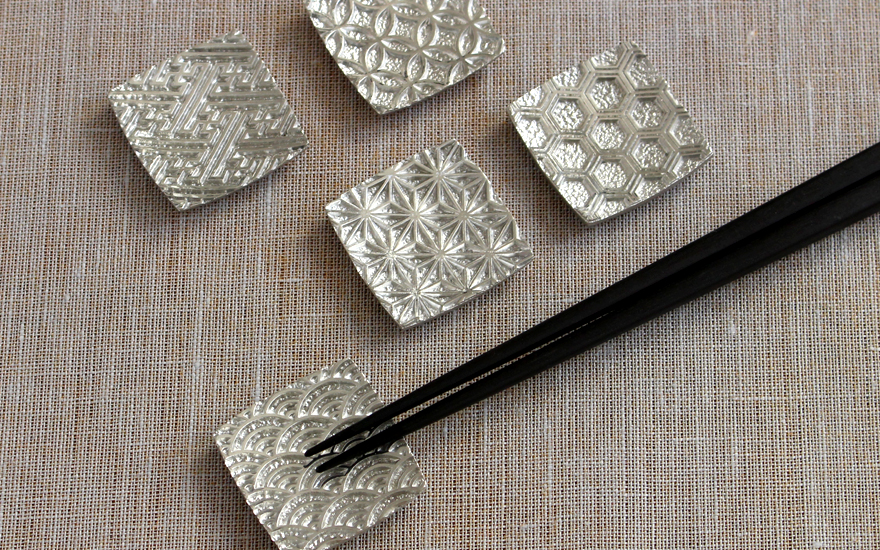| 商品名 | 生産国 | 素材 | サイズ |
|---|---|---|---|
| 炭谷三郎商店 箸置5個セット 吉祥紋様 | 日本 | 錫(スズ) | 本体:約W33×H5mm 桐箱:約208×44×7mm |
商品コード: 734000107010
- ・ご使用後は柔らかいスポンジを用いて台所用中世洗剤で洗い、水分をよく拭き取ってください。
- ・錫は柔らかい金属ですのでタワシや研磨剤の入ったものはお使いにならないでください。
- ・酸性のもの(お酢やなど)が付着すると変色する場合がございます。
- ・溶解温度(約230℃)が低いため直火でのご使用はお避けください。
- ・電子レンジ、食洗器の使用、冷凍庫での保管もお避けください。
- ・経年変化により次第にくすんだ色になりますが、気になる場合は金属磨きや重曹で磨くと光沢が戻ります。
- Rinse tinware with water or lukewarm water after use, and wash with a neutral detergent when particularly dirty.
- Do not use a scrubbing brush or an abrasive detergent, as tin is a soft metal.
- Residual water drops may cause stains on the surface. Make sure to completely wipe off water drops.
- Adhesion of acidic substances (such as vinegar) may cause the tinware to tarnish.
- As the melting temperature is low (about 230°C), do not use tinware on open flames.
- Refrain from using in a microwave oven or dishwasher and storing in a refrigerator.
- ※ 本商品は、実店舗(WISE・WISE tools)でも販売しております。システム管理上、実店舗での販売・在庫状況と本サイトの販売・在庫状況の確認に遅れが生じる場合があり、本商品をご購入後にキャンセル、または、お届け日が大幅に遅れる場合がございます。お客様にはご迷惑をおかけいたしますがご理解の程よろしくお願いいたします。
博鳳堂 炭谷三郎商店 Hakuhodo Sumitanisaburoshoten
- 富山県高岡市 Takaoka, Toyama Pref.
博鳳堂 炭谷三郎商店は、江戸期(慶長16年)より400年の伝統を持つ高岡銅器の鋳造・金属加工技術を生かし、さまざまな金属素材と製法により美術工芸品はもとより金属クラフトを通じて、心と暮らしを豊かにする商品を提案しています。
Hakuhodo Sumitani Saburo Shoten offers items that makes people’s hearts and life rich, through fine arts and crafts as well as metal craftworks based on various metals and manufacturing processes, taking advantage of Takaoka Copperware’s casting and metal working techniques that have been passed down for 400 years since the Edo Period (Keicho 16).
|
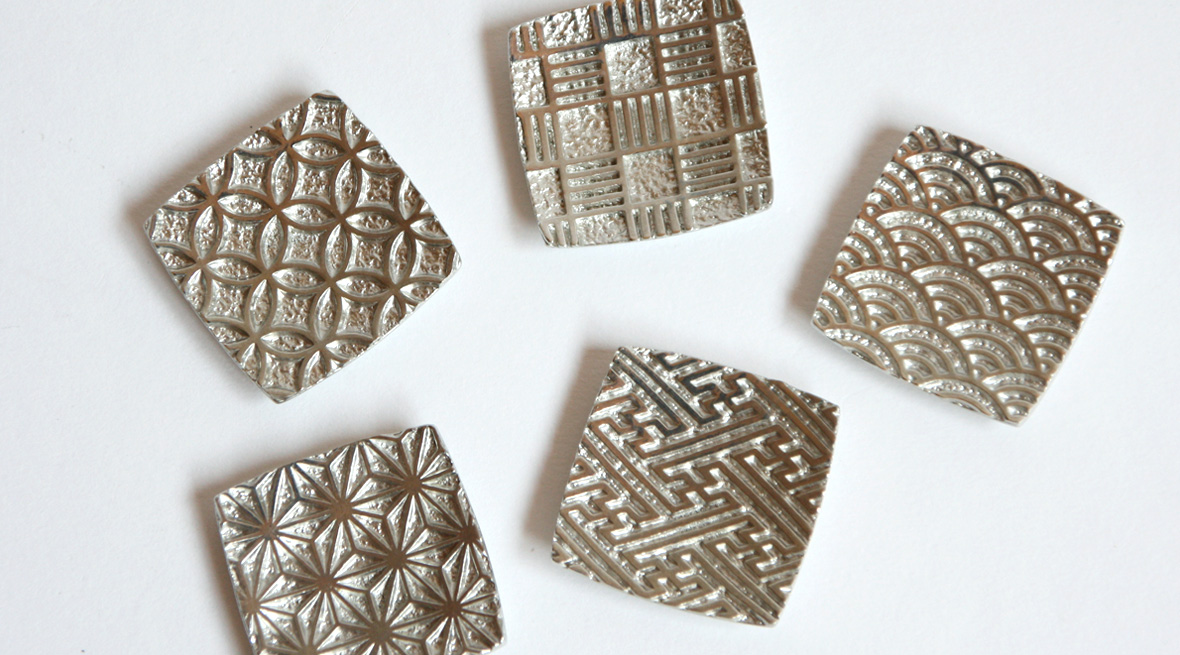
-
炭谷三郎商店 吉祥文様の箸置
「吉祥文様(きっしょうもんよう)」とは、日本に古くから伝わる伝統的な文様の中で、“縁起が良い”とされる動植物や図形を用いた図柄のこと。
様々な願いや祈りが込められた5種類の文様をモチーフにした、おめでたい贈りものにぴったりの縁起物の箸置です。
博鳳堂 炭谷三郎商店は、江戸期(慶長16年)より400年の伝統を持つ高岡銅器の鋳造・金属加工技術を生かし、さまざまな金属素材と製法により美術工芸品はもとより金属クラフトを通じて、心と暮らしを豊かにする商品を提案しています。
“Kissho-Monyo” are auspicious omens motifs, which are graphic animals, plants and some figures that are thought by ancient people to be symbols of happiness. They are well embraced mainly in the Chinese cultural sphere including Japan.
These chopstick rests in the motifs of five Kissho-Monyo are perfect for a gift.
Hakuhodo Sumitani Saburo Shoten offers items, that make people’s life rich, through fine arts and crafts as well as metal craftworks made by various materials and manufacturing processes, taking advantage of Takaoka Copperware’s casting and metal working techniques that have been passed down for 400 years since the Edo Period (1611).
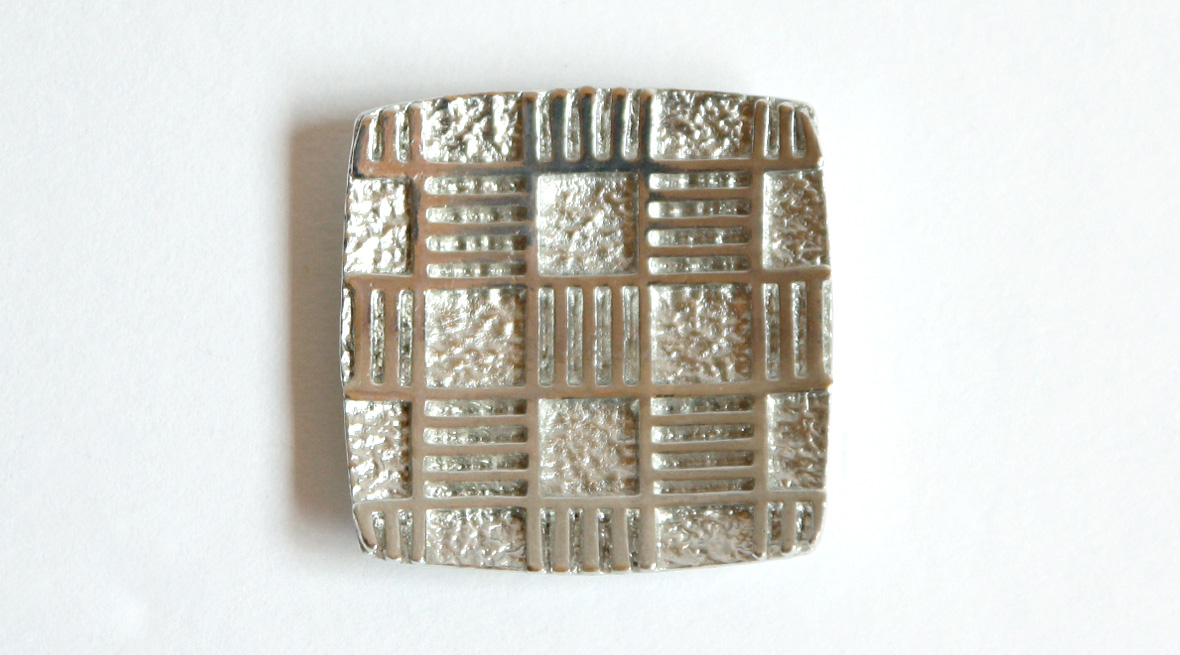
-
市松(いちまつ)
江戸時代に人気のあった女形の歌舞伎役者「佐野川市松」に由来。
二色の四角形を交互に配した格子模様の一種で、柄が途切れず続くことから「繁栄」の意味が込められています。
子孫繁栄や事業拡大など、縁起の良い模様として多くの人に好まれています。
Ichimatsu
This pattern is very popular all over the world. It has been used for garments and architecture since the Neolithic era. It is familiar in Japan too and “Ichimatsu” was named after SANOGAWA Ichimatsu (1722-1762), a famous Kabuki actor, in the Edo (Shogun) period, as he loved to use a stage costume with this pattern. As one of Kissho-Monyo, Ichimatsu is regarded as “eternal prosperity” being associated with seamless repeating patterns.
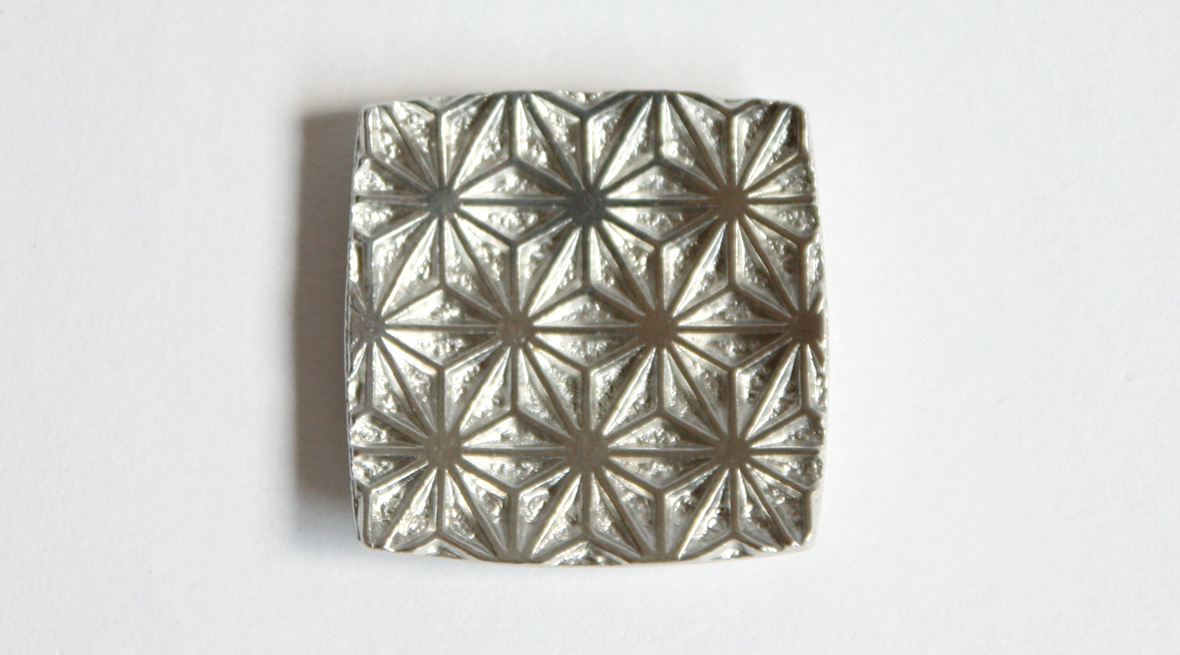
-
麻の葉(あさのは)
麻は生命力が強くぐんぐんと成長することから、子供の健やかな成長を象徴するものとされていました。魔除けとして、赤ちゃんの産着に麻の葉模様をつけることもあったそうです。
Asa no ha (Hemp leaf pattern)
As hemp is a vigorous pant and grows very fast, it was believed as the symbol of healthy growth of children. It is said that this pattern was sometimes sewed on baby’s swaddling clothes as charm against evil.
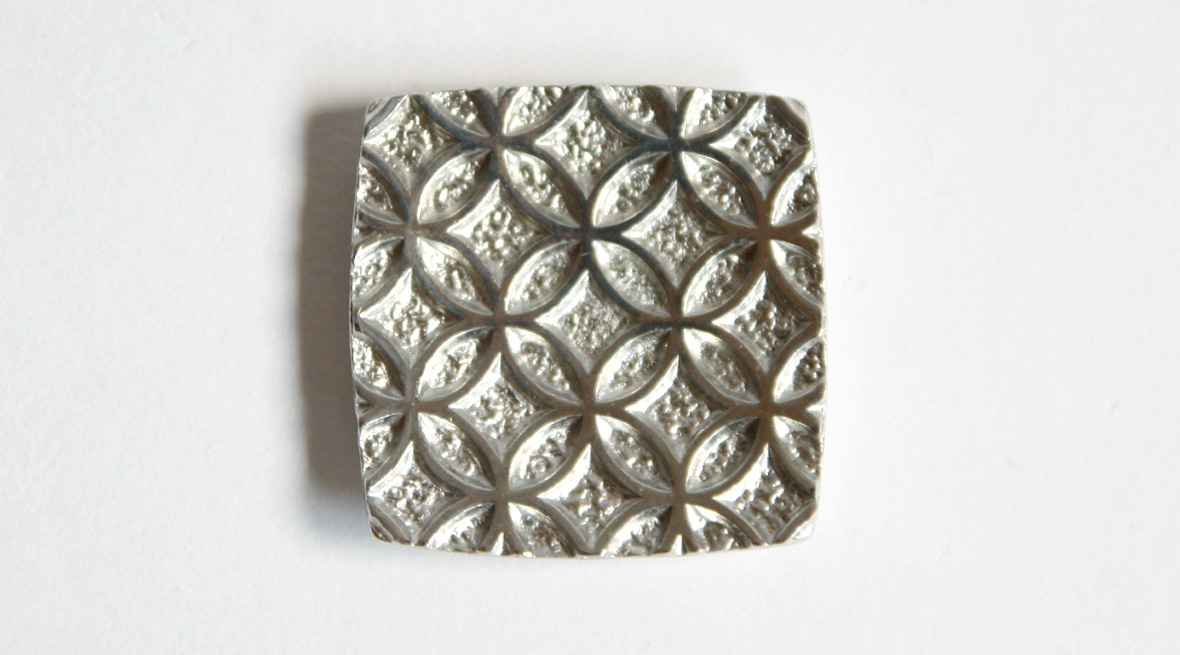
-
七宝(しっぽう)
仏教の経典にある七つの宝物 「金」「銀」「瑠璃」「珊瑚」「瑪瑙(めのう)」「玻璃(はり~水晶のこと)」「(千年生きるとされる)シャコガイ」に由来します。これらを同径円を4分の1ずつ重ねて繋ぎ図案化したものを七宝文様といいます。無限の円形の連鎖が「円満な人生」を象徴します。
Shippo (Cloisonne)
Shippo (cloisonne or seven treasures) represent “Gold”, “Silver”, “Lapis Lazuli”, “Coral”, “Agate”, “Crystal” and “Giant Clam which were believed to be live long” that are all appeared in Buddhist scriptures. These were simply stylized by making circles with the same diameter quarterly overlapped and chained. Perpetual chaining of circles symbolizes a “harmonious life”.
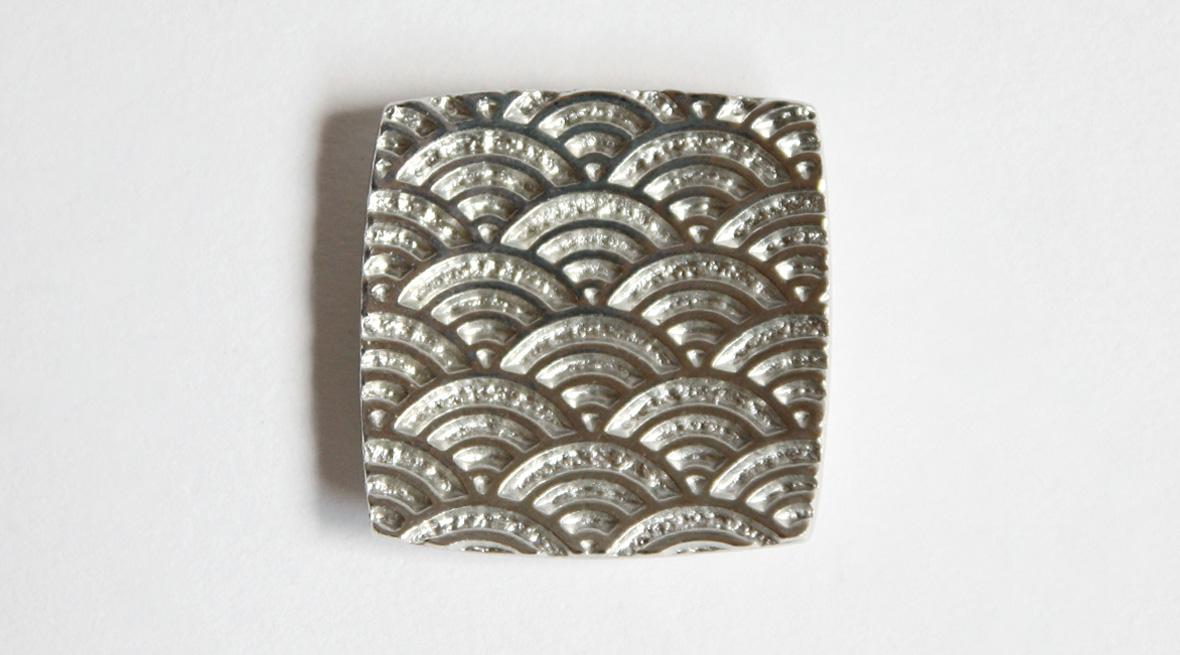
-
青海波(せいがいは)
発祥は古代ペルシャとされています。シルクロードを経て日本に伝わったのは聖徳太子のいた飛鳥時代(592~710年)。
大海原の穏やかな波を表し、平穏な暮らしが続くことを願う吉祥文様です。
Seigai-ha (Blue ocean wave)
This pattern is said to be originally from the Persian Empire. It reached Japan during the Asuka era (592-710), when famous Prince Shotoku lived, via Silk Road and China. The pattern represents gentle ocean waves and symbolizes desire for continuance of peaceful life.
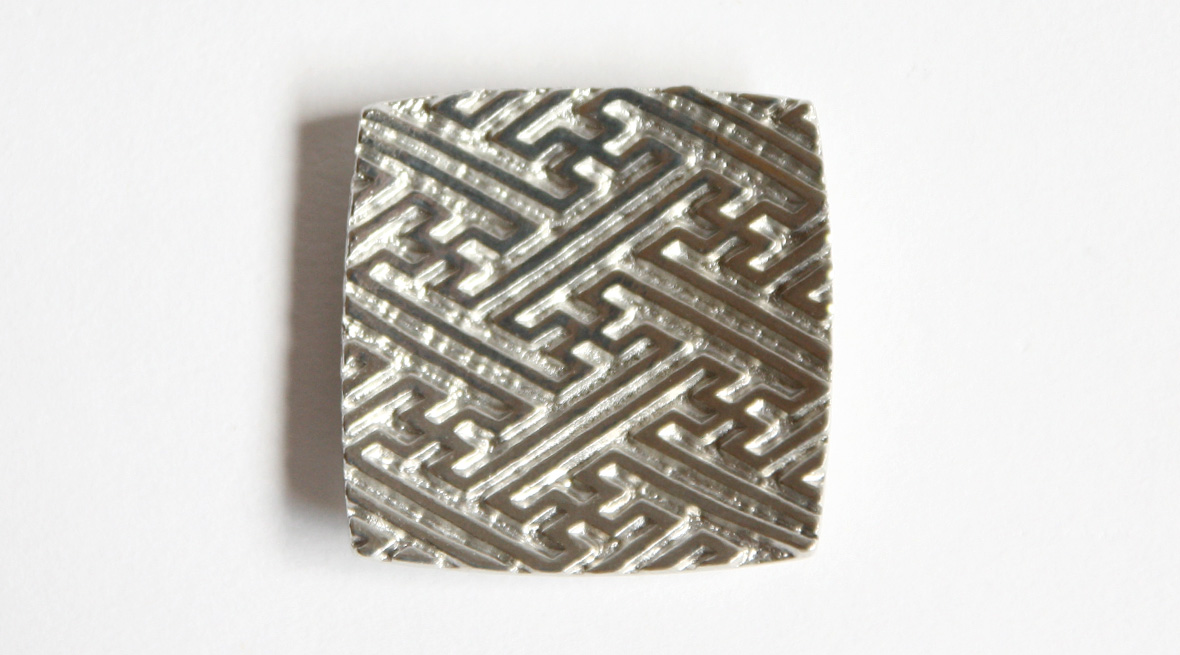
-
紗綾形(さやがた)
中国から輸入していた紗綾織と呼ばれる絹織物の文様として多く用いられていたことから、この名がついています。
モチーフの卍(まんじ)の起源は石器時代のインドに遡ります。
太陽が光を放つ様子とされ、日本には、中国の明(1368 - 1644年)の時代に伝わったと考えられています。
「卍」を菱形にゆがめ、文字同士を迷路のように繋いだ吉祥文様です。
絶えずに続く「不断長久(ふだんちょうきゅう)」を意味し、家の繁栄や長寿などを象徴します。
Saya-gata
The name “Saya-gata (Saya pattern)” is named after the design used on a silk fabric from China named “Saya”. The motif is the swastika, the origin of which dates to India of the Stone Age. One says that it denotes rays of the sun and came to Japan through China in the era of the Ming Dynasty (1368~1644). The original swastika symbols are skewed into rhombus and they are connected each other as if labyrinth. This Kissho Monyo pattern means “Perpetuity” and represents prosperity of your family and long life.
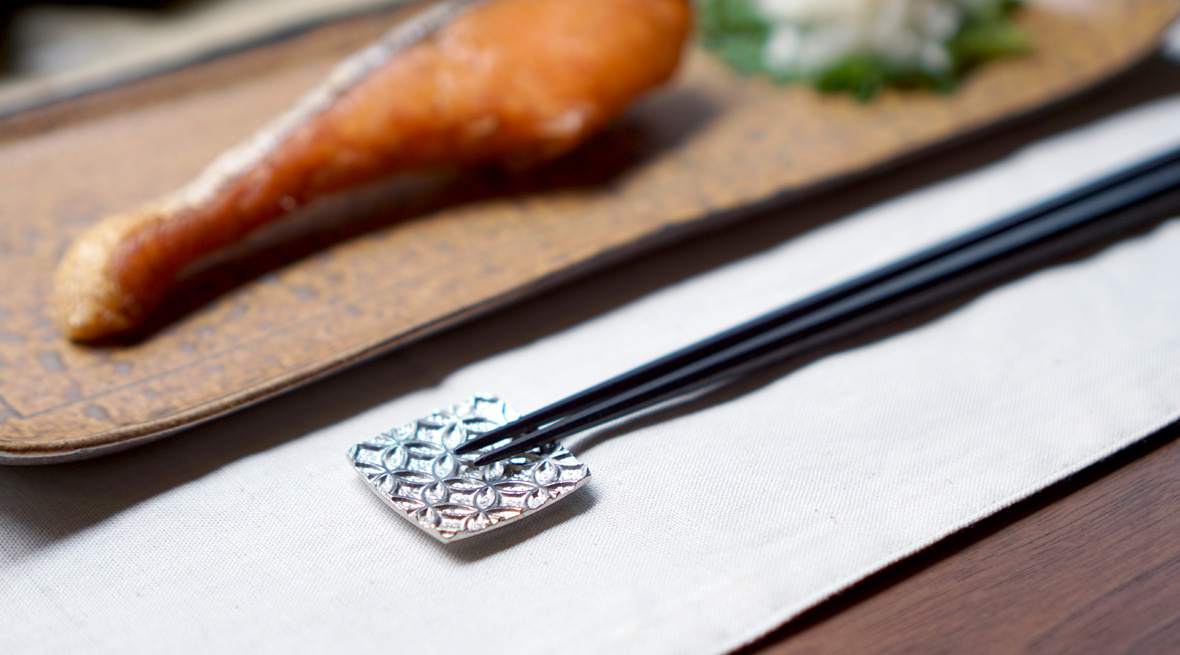
-
贈りものに最適です
Perfect for a gift. 繊細な加工技術が生み出す凹凸。表面は手仕上げによる上品な光沢が美しい、錫製の箸置。
素材の色を生かした上品な銀色は、どんな色のお箸にも合わせやすく、テーブルコーディネートに馴染みます。
スタッキングも可能なので、省スペースに収納できる優れもの。
もてなす相手やその日の気分に合わせて、お好きな柄を選んでみませんか。それぞれの文様の意味を知れば、使うのがより楽しくなりますね。
Delicate processing techniques and hand-worked finish have made possible orderly patterned indented surface with elegant luster. The material is tin.
Natural tin color goes with any color of chopsticks.
As the chopstick rests are stackable, they save place for storage.
It’s fun to use different types of Kissho-Monyo depending on your mood and the occasion where you are. The more you know the meaning of each Kissho-Monyo, the more you like to use them.
桐箱入りの2個セット、単品販売もご用意がございます。
Buying individual piece and a set of two different Kissho-Monyo rests are also available.


